Introduction
What is the best way to thermally characterize highconductivity materials at cryogenic and moderate temperatures, or ceramics and refractories at elevated temperatures? One accurate, reliable and elegant solution is the Flash Method. It has been proven as a reliable noncontact and direct measurement method in many application areas including polymers, ceramics, metals and refractories. Meanwhile, the demand for high sample throughput and simultaneous improvement of precision has become more and more important.
With the LFA 467 HyperFlash® (figure 1), NETZSCH offers efficient, state-of-the-art technology for the determination of thermophysical properties across a broad application range.
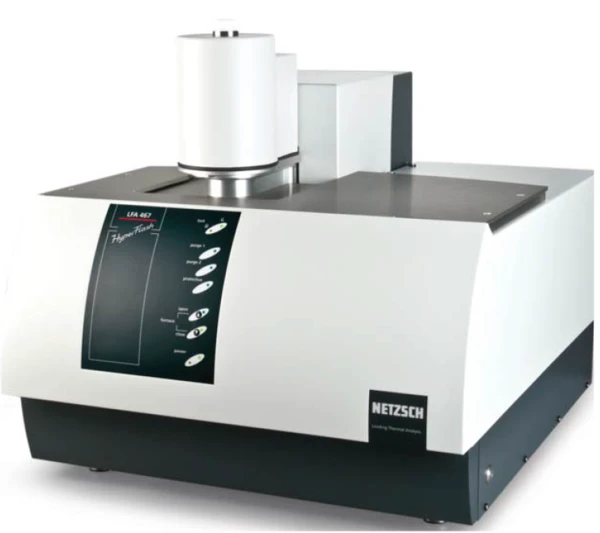
In order to further improve the precision of LFA measurements, a moveable lens called ZoomOptics has been developed. ZoomOptics allows for an optimized field of view of the sample’s surface by means of software control. The following illustrations will clarify the concept behind this newly implemented device.
Without ZoomOptics – Distortion from the ApertureStop
In other contemporary LFA systems, the field of view is fixed and large enough to accommodate large-diameter samples (figure 2). When testing smaller-diameter samples, masks are commonly used in an attempt to minimize the influence of the surroundings. This often results in a significant distortion of the thermal curve in that the detector not only senses the temperature excursion of the sample, but also any fluctuations from the aperture stop.
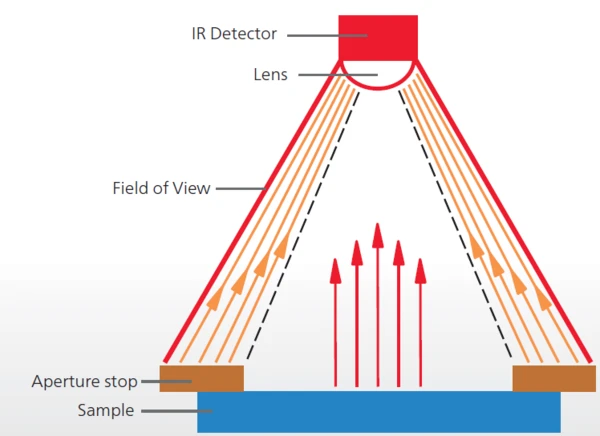
Consequently, the thermal curve would show either a continuously increasing trend or, as depicted below, an extended leveling-off period (figure 3). The problematic aspect of this is that such distortion cannot be discerned by an inexperienced user. A decline in the detector signal and a clear maximum are both lacking. This is because the effects from the aperture stop are super-imposed onto those from the sample.
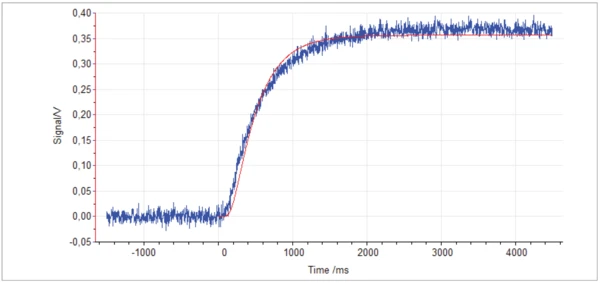
ZoomOptics Circumvents the Aperture Stop Distortion Problem
The new ZoomOptics feature in the LFA 467 HyperFlash® ensures that the IR signal being recorded is originating solely from the sample surface and not from any surrounding zones (figure 4). This allows both large and small samples to be tested with an optimal sensing area. In contrast with the previous confi guration (figure 2), the lens has now been shifted for an adequate field of view. The aperture stop is thus no longer capable of producing any noticeable eff ects on the signal. As expected, the thermal curve now conforms to the theoretical model, yielding correct diffusivity values (figure 5).
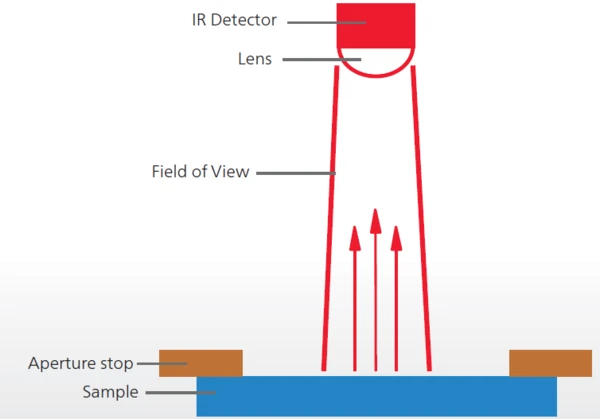
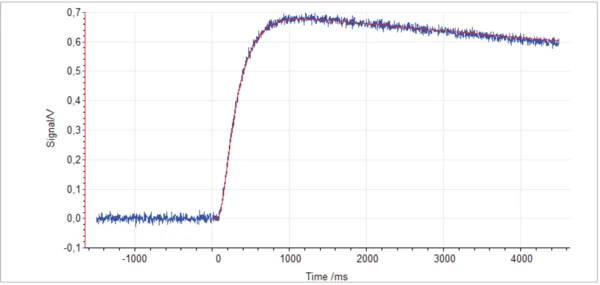
ZoomOptics for Precise Measurement Results
Between the detector and the sample, a stepper motor actuated lens optimizes the fi eld of view by means of software control; i.e., without the need to employ a mask (figures 6; patent-pending). This circumvents the occurrence of measurement artifacts resulting from aperture stop plate contributions which cause a delayed IR signal on the sample. The example shown in figure 6 contrasts two Pyroceram measurements; the first (green result, right picture) applied ZoomOptics and the second (yellow result, left picture) did not. In this example, Pyroceram was measured. The theoretical Difusividade TérmicaThermal diffusivity (a with the unit mm2/s) is a material-specific property for characterizing unsteady heat conduction. This value describes how quickly a material reacts to a change in temperature.thermal diffusivity of Pyroceram at RT is 1.926 mm²/s, a value which is in good agreement with the green result in figure 6. In the case of the the yellow result, a deviation of 38% occurred, caused by misalignment of the lens covering both the sample and part of the surroundings.

Conclusion
One of the exceptional features of the LFA 467 HyperFlash® is the optionally integrated ZoomOptics . It makes operation with masks unnecessary, instead simply fading out any signal distortions from the sample’s immediate surroundings. As a consequence, the precision of the test results increases – especially for samples with smaller diameters.